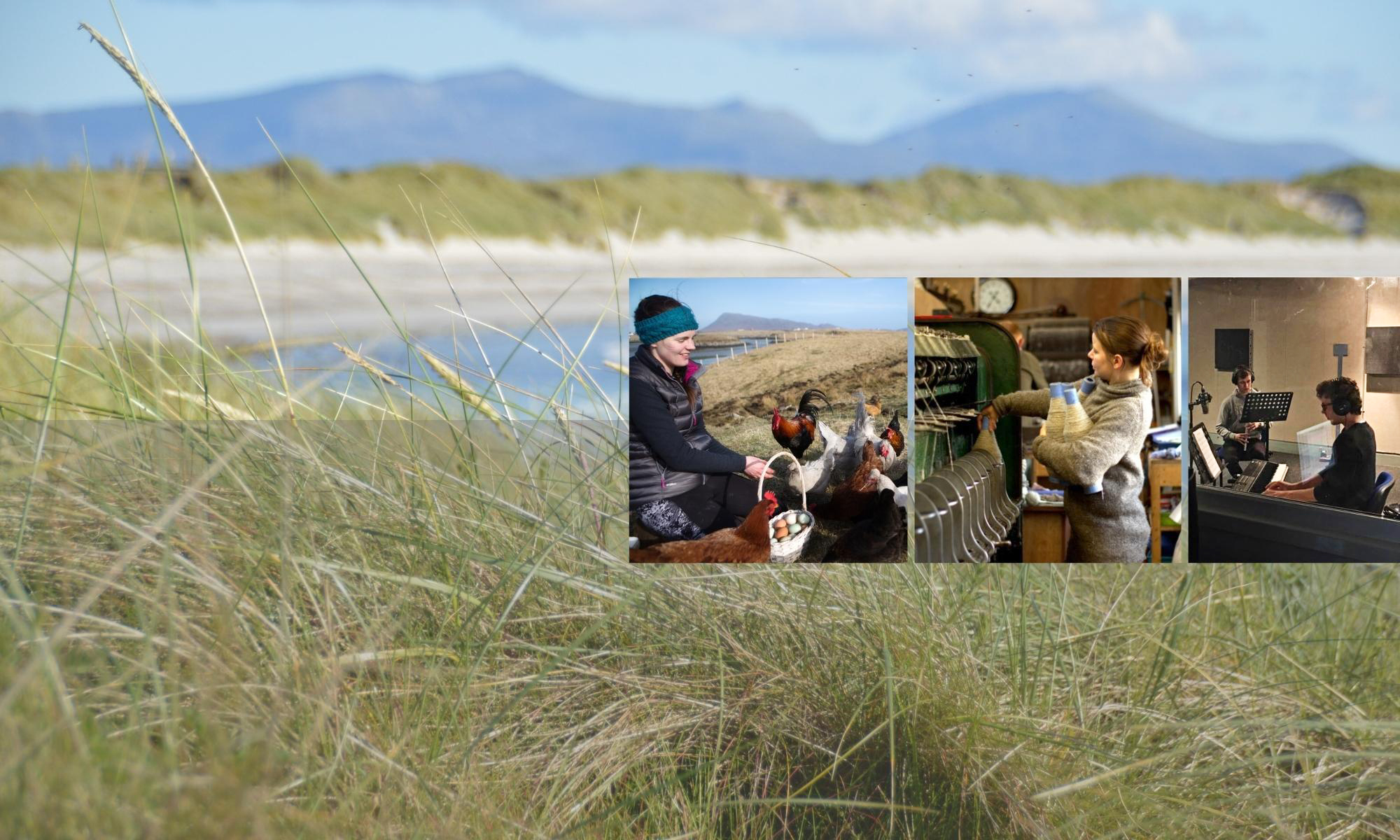by Theona Morrison, Co-Director, CoDeL

In my previous blogpost about the Arctic Circle Assembly I said that would focus a little on indigenous voices. As well as the session on ‘Remote Areas: A window of opportunity’, I also presented at one called ‘Polar Law: The Just Transition to Low Carbon Economies in the Arctic and Beyond’.
I spoke about food and the global movement of ‘product’ around the world. Rosie MacLeod, who was with me from Raasay, presented her work on the new hydro power in Raasay (see Rosie’s blogpost here). SSE had given £350,000 towards the scheme, but three local young people on the board of Raasay Development Trust issued a Community Share Offer which raised a further £650,000 in seven weeks! They aim to sell the electricity locally, with profits going into a community benefit scheme which they will use to refit old houses – brilliant! Oh that we could do that in Uist and everywhere else! The injustice of hosting production of renewable energy and then paying more for the the use of the energy than those in cities is anything but ‘just’.

This was the feedback from Professor Rachael Lorna Johnstone, Professor at Háskólinn (University) á Akureyri:
Dear friends, I wanted to thank you for a very successful (in my humble view) session on the Just Transition at ACA. We had a great turnout and good feedback on the session. To my delight, Aili Keskitalo, former president of the Saami Parliament in Norwegian Sápmi, came up and thanked us for the session and was very positive about it! If we have her approval, I do not need anyone else’s! Let’s keep fighting the good fight! Rachael
As I said in my previous blogpost, it was encouraging to see that indigenous peoples could be heard in a range of sessions, although, as one person said, “we do not lack technical innovation in the Arctic, but we lack business (will, as in commitment) and political innovation”.
‘A sign of hope is being able to speak in your own indigenous language’.
Mary Simon, Governor General of Canada (the first indigenous person to hold this office) at the Arctic Assembly
I attended a plenary session hosted by the Americans: ‘The Future of Arctic Peace, Science and Security’. They summarised their new strategy in which they spoke about prosperity, sustainable growth etc. Of course security is a big driver, because ‘their’ Arctic is across the water from ‘the Russian Arctic’. But always growth, just mitigating the how. After the presentation I said I hadn’t read their new strategy but hoped that it was crafted with a good heart. However, I asked whether we shouldn’t be considering new ways of living, instead of a continual extraction model to prop up societies far removed from the Arctic. Shouldn’t we be considering some degrowth ideas? There was a big round of applause and then a group of indigenous people came and hugged me.
The response from the stage was that it was ok for those of us who have what we need to take that position, but he thought indigenous peoples would want roads and hospitals, etc. The following day the Inuit gave me a book explaining how mitigating strategies like pumping CO2 into defunct oil wells is not having a good impact on climate responses locally.
We also heard that Arctic people have the insights but not the voice or governance. Local groups can respond but don’t have influence. If a cause is taken up by national or international organisations, it can be debated year on year with no action in the end. Models lack the space for justice and equity.
Some of the most insightful sessions I attended were actually led by indigenous people from across the Arctic. One session was called ‘Indigenous knowledge and cosmovision in climate mitigation’. Some of the quotes I noted were:
“Our language roots us with our traditions (Inuit). English phrases such as ‘traditional ecological knowledge’ puts us in a box”.
“If we were to leave this earth (as humans) Mother Earth would heal herself, the animals would remain.”
They regard themselves as a land-based people whose knowledge is shared. So many similarities to that of the Gaels on the western fringes of Scotland.
At another session, ‘A “Just” Energy Transition in the Arctic’, indigenous leader and Senior Regional Director of Alaska said ‘be careful what you wish for’. Tesla are rolling out electric cars as a green fuel alternative for cars, but this has resulted in the destruction of a mountain in their territory being mined for minerals needed for the electric cars.
In addition to visiting the tomato farm on the last day, we also visited the National Park where the first National Parliament was held by the Vikings, not regional assemblies, but country wide. There were no indigenous people in Iceland, the Vikings from Norway were first, arriving via Ireland, so their genetic mix on the male line is Norwegian and Irish on the female line. Yet more links between Scotland and the Arctic.
“Iceland was in independent Commonwealth from 874- 13th century with the oldest parliament in the world. It subsequently came under the influence of the Kingdoms of Norway and Denmark but continued as an independent country. In 1944 it became a republic, rejecting monarchy.” (Thanks to D Hitchins for this comment on my previous blogpost from the Arctic Circle.)

